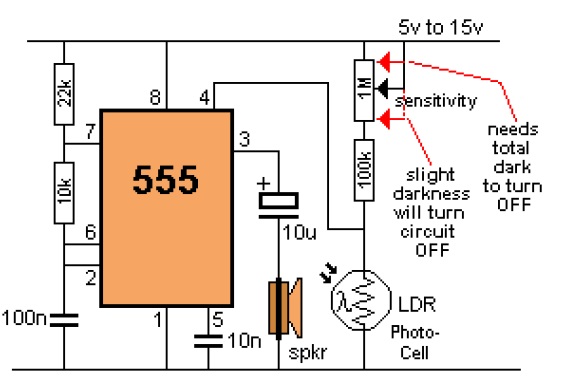555 IC Timer and Its applications
The 555 integrated circuit is the most popular chip ever manufactured. Independently manufactured by more than 20 manufacturers, still in current production, and almost 50 years old, this little circuit has withstood the test of time. It has been redesigned, improved, and reconfigured in many ways, yet the original design can be bought from many vendors. The design of this chip was right the first time.

The 555 timer IC was first introduced around 1971 by the Signetics Corporation as the SE555/NE555 and was called "The IC Time Machine" and was also the very first and only commercial timer IC available. It provided circuit designers with a relatively cheap, stable, and user-friendly integrated circuit for both monostable and astable applications.
Over 1 billion of these ICs were made in 2003 with no apparent reduction in demand. It has been used in everything from toys to spacecraft. Due to its versatility, availability, and low cost it remains a hobbyist favorite.
One of the secrets to its success is it is a true black box, its symbolized schematic is simple and accurate enough that designs using this simplification as a reference tend to work first time. You don’t need to understand every transistor in the base schematic to make it work.
Pin Configuration
The 555 timer is an 8-Pin D.I.L. Integrated Circuit or 'chip'.


Important Parameters
- Contains 25 transistors, 2 diodes and 20 resistors.
- Operates from voltage of 4V to around 16-18V.
- Can Drive a load of 200mA
- Costs around 15-20/-
- The 555 comes as a single timer in an 8-pin package or a dual timer (556) in a 14 pin package.
- TTL version is "555" and the CMOS version is "7555"
- Output is about 1-2V LESS THAN rail voltage and does not go to 0v (about 0.7v for 10mA and up to 1900mV for 200mA sinking current).
- Astable multivibrator
- Monostable multivibrator
- Bi-stable multivibrator
Functions of Pins

Schematic Diagram

Block Diagram

Applications

Block Diagram

Applications
To switch on or off an output after a certain time delay i.e.GamesTimer, Exercise timer.
To continually switch on and off an output i.e. warning lights, Bicycle indicators.
As a pulse generator i.e. To provide a series of clock pulses for a counter.
Modes of Operation
The 555 has three modes of operation
Astable Mode
Oscillator mode = astable multivibrator mode
Translation: in this mode the IC 555 will continue to put out pulses until you remove the battery.(your choice of resistors and capacitors determines the vibration frequency)
The 555 timer is a two quasi stable state device: HI and LO


Bi-stable mode
Memory mode = Bi-stable multivibrator mode
It has two stable states (HIGH or LOW)
Set turns the output ON and Reset turns the output OFF.

Applications:
Alarm generation based on sensor signals and reset on certain conditions or manual reset.
Mono-stable mode
Pulse extender or one shot = Mono-stable multivibrator
It has one stable state (HIGH or LOW) and one Quasi stable state.
Output will be in stable state on power ON. On triggering output goes to quasi stable state, stays for a time duration and returns to stable state.
Applications:
Pulse stretchers, Timers
555 IC Projects
10 Min Timer

10 Min Timer

Continuty Tester

Toy organ

Flashing Railroad lights

Light Detector

Dark Detector

Siren

Touch Switch

Tilt Switch

Square wawe oscillator Kit
